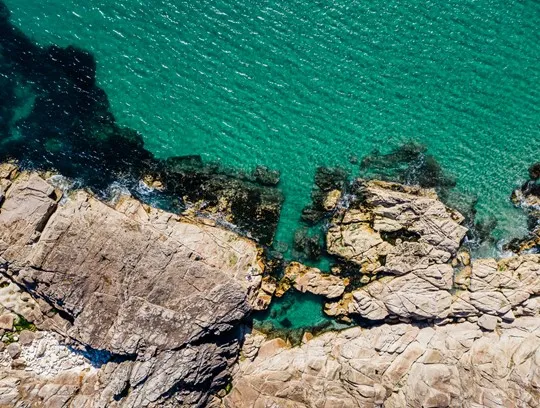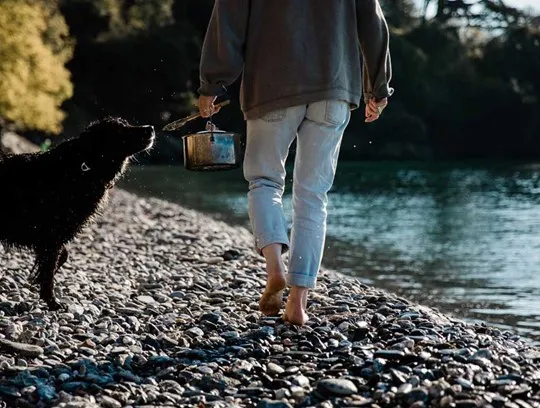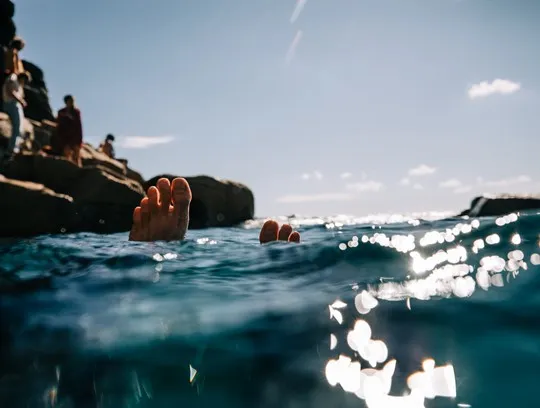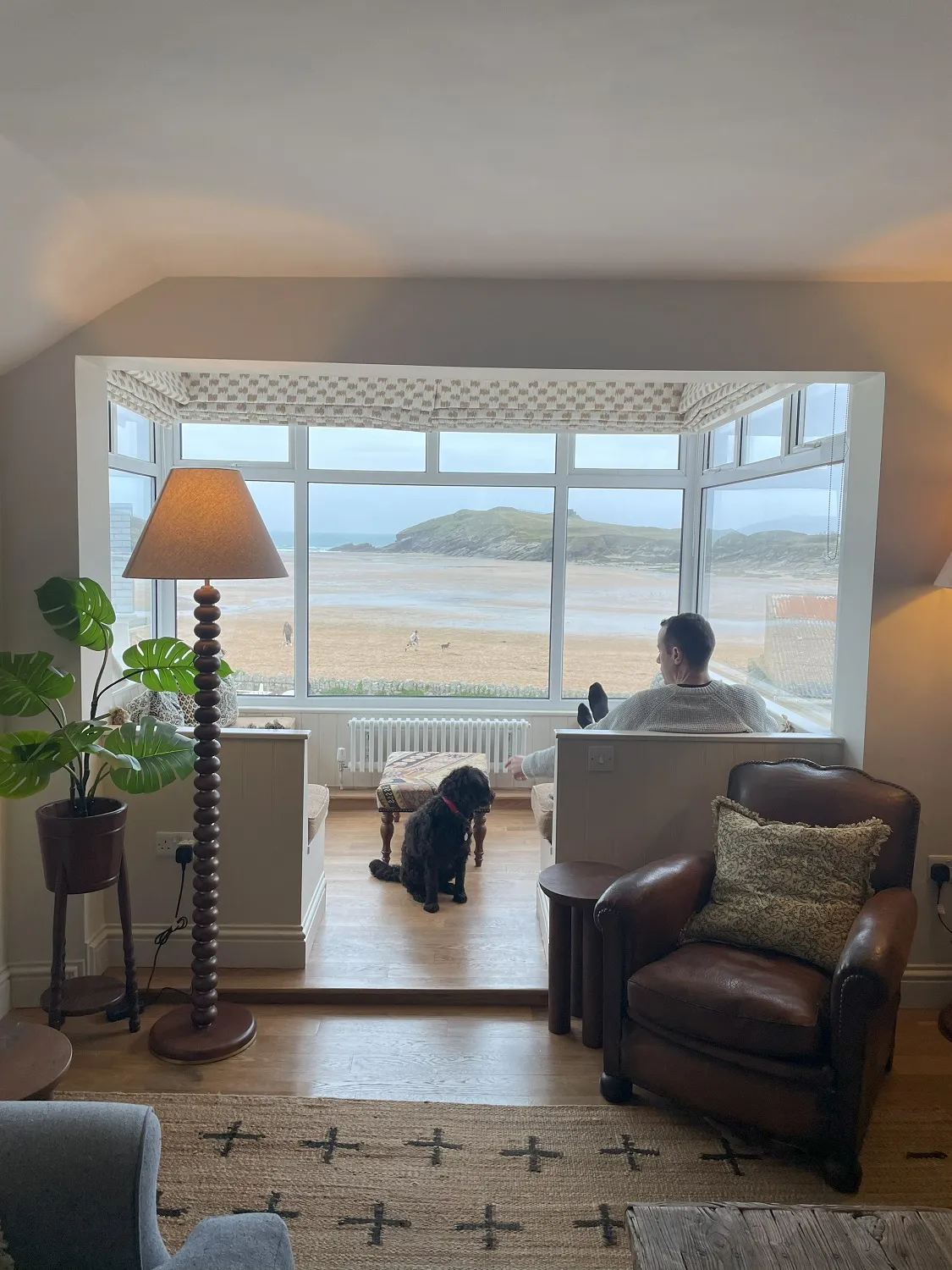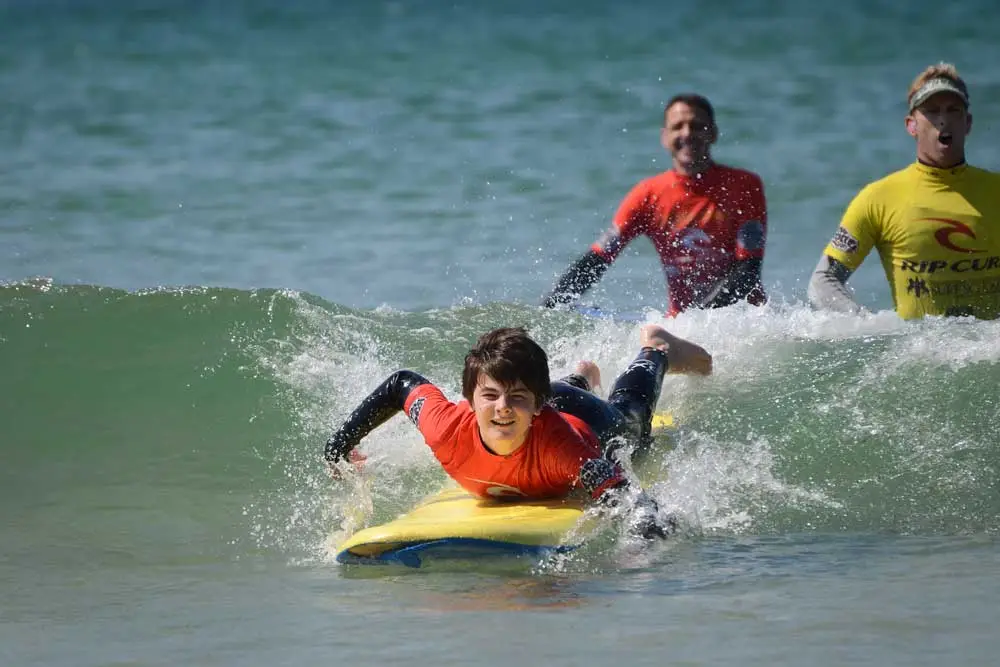MENU
Out in the wild
7th February 2023
There’s a world of wildlife out there in the untamed coastal waters of Cornwall. Finding it requires patience, luck and respect. We struck out by boat in search of this natural wonder…
Still, transparent water, jagged, rocky cliffs, open, stretching skies: our view from Coast Boat Trips’ lively rib certainly delivers. But would the wildlife?
Embarking from Penzance we zip out to sea and towards Land’s End in search of marine animals in their natural habitat.
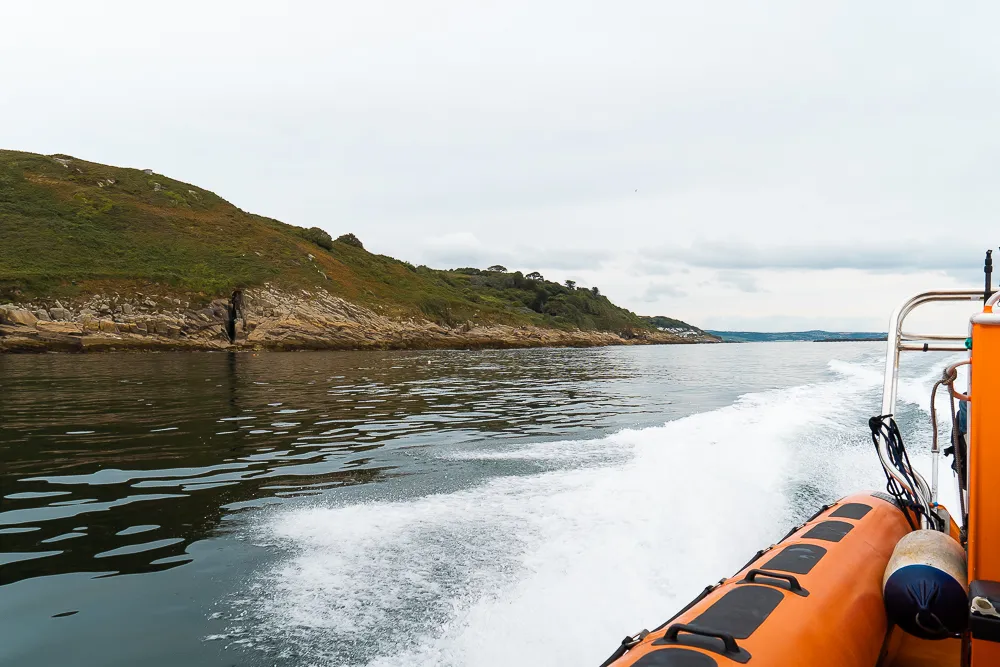
Fast and fun, the boat bounces west to pass the harbour town of Mousehole and the dramatic cove at Pedn Vounder, before capturing a majestic view of the granite rocks where the Minack Theatre lives.
“The captain slows the engine and we wait. Our patience is rewarded.”
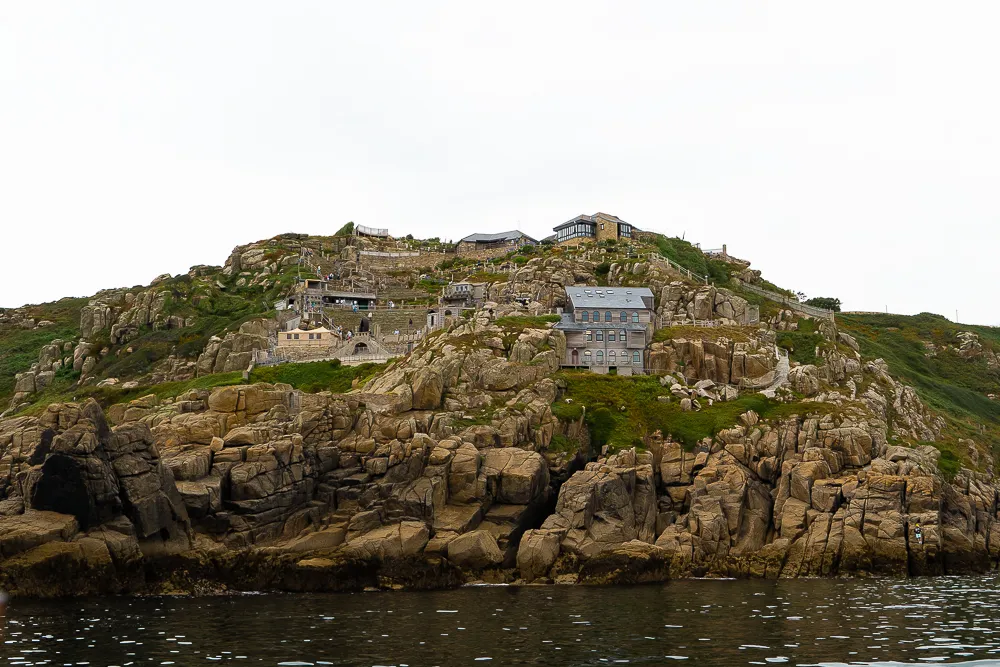
As we swing around the peninsula at Land’s End, we spot a single dolphin emerging from the water about 30 metres away. The captain slows the engine and we wait. Our patience is rewarded. A pod of common dolphins gathers around the boat, jumping from the water. One dolphin comes up close to the left of the boat where we can see it swimming in the clear water.
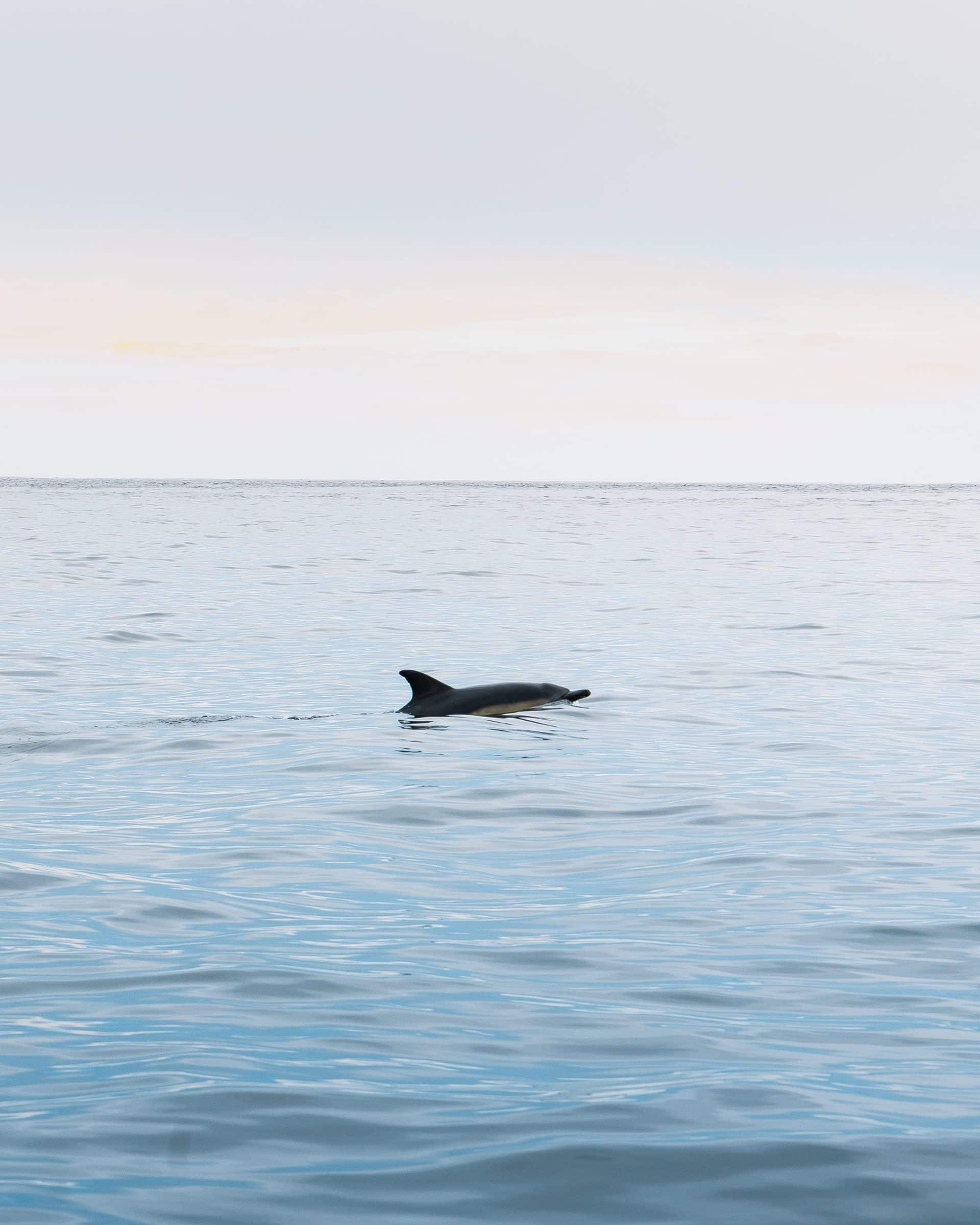
All around the coastline we encounter different wildlife: seals stretched out on rocky outcrops, sea birds swooping and circling, shy porpoises swimming deep and emerging occasionally for air.
As we take in the sights, we get expert commentary on the local history, the marine conditions and wildlife, discovering that dolphins keep swimming even when asleep, slowly bobbing in and out of the water on autopilot.
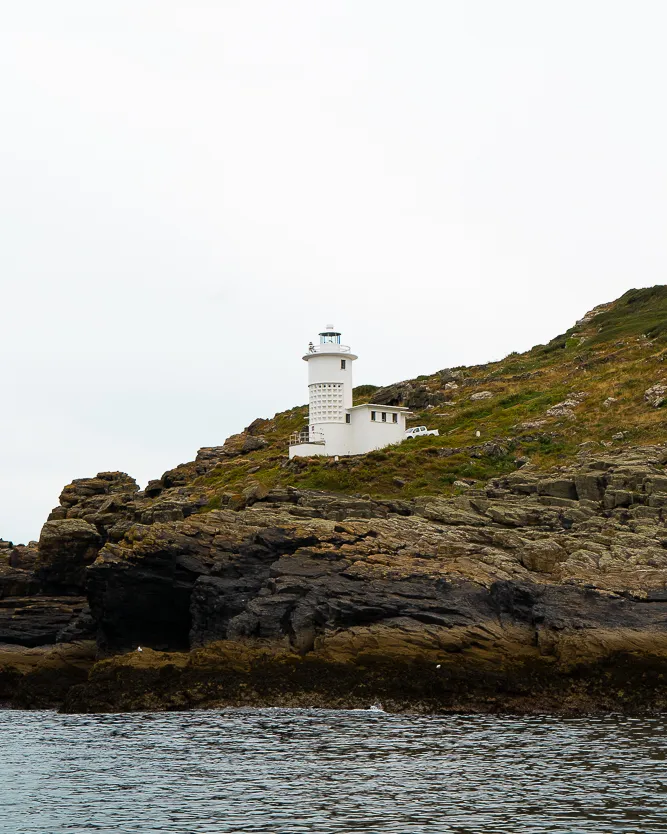
Seasonal spotting
Our experience on the water around West Cornwall was magical and exciting, but how common is it to encounter marine wildlife around the coast?
“Summer and autumn are some of the busiest times for marine wildlife,” says Matt Slater, Marine Conservation Officer at Cornwall Wildlife Trust.
“Common dolphins are becoming an increasingly common sight around our coast; there’s a very high chance you’ll see them. They’re quite small and enjoy swimming in the wake of the bow wave created by a boat.”
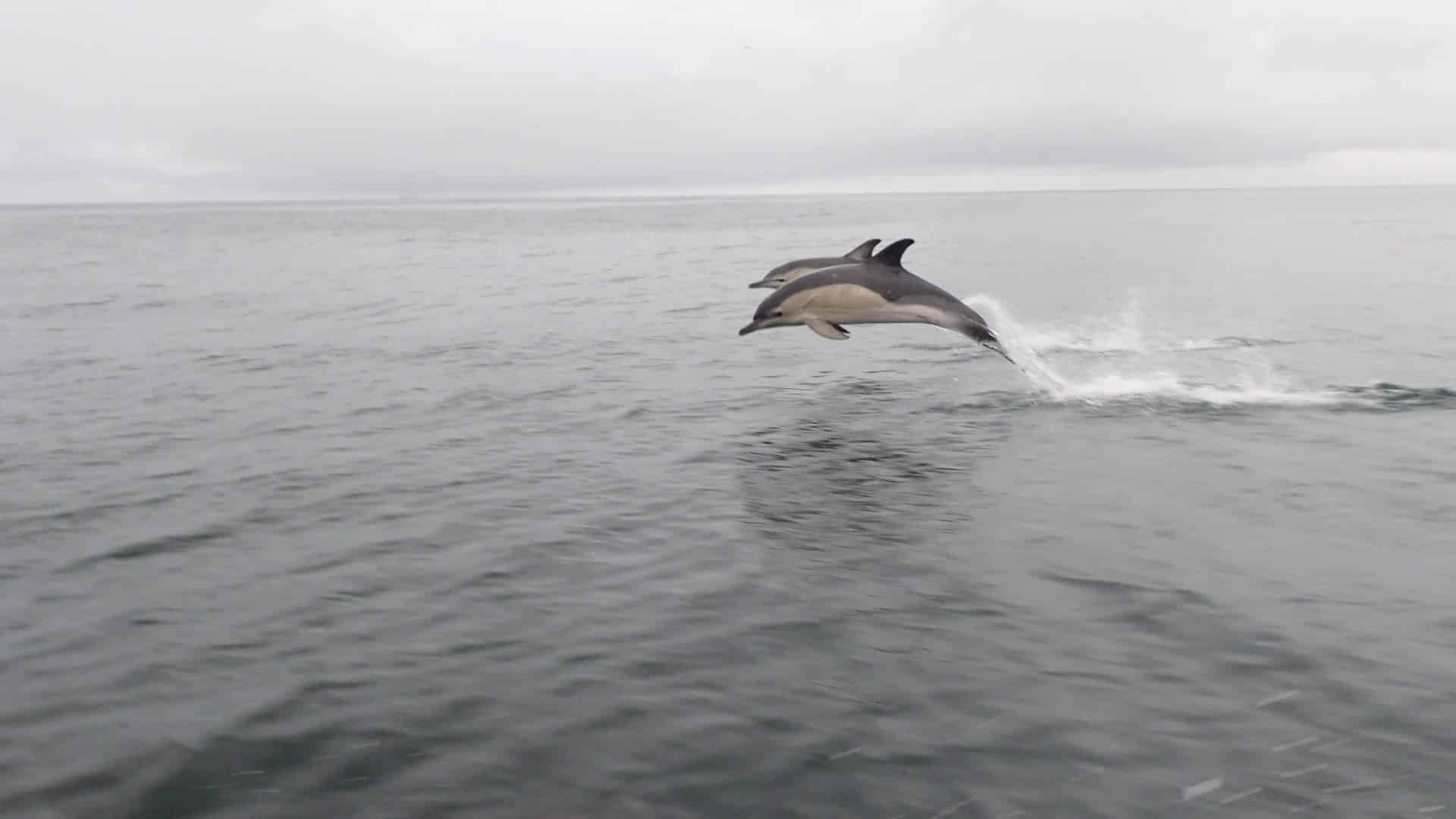
Image credit: Matt Slater
“Summer and autumn is also when ocean dwellers that like warmer water venture into Cornish waters. In the last six years we’ve also started seeing Atlantic blue fin tuna.”
As we found, porpoises, a smaller cetacean, are harder to spot. Matt says, like dolphins, porpoises are also likely to be seen in summer and autumn; although, sightings are also reported in spring.
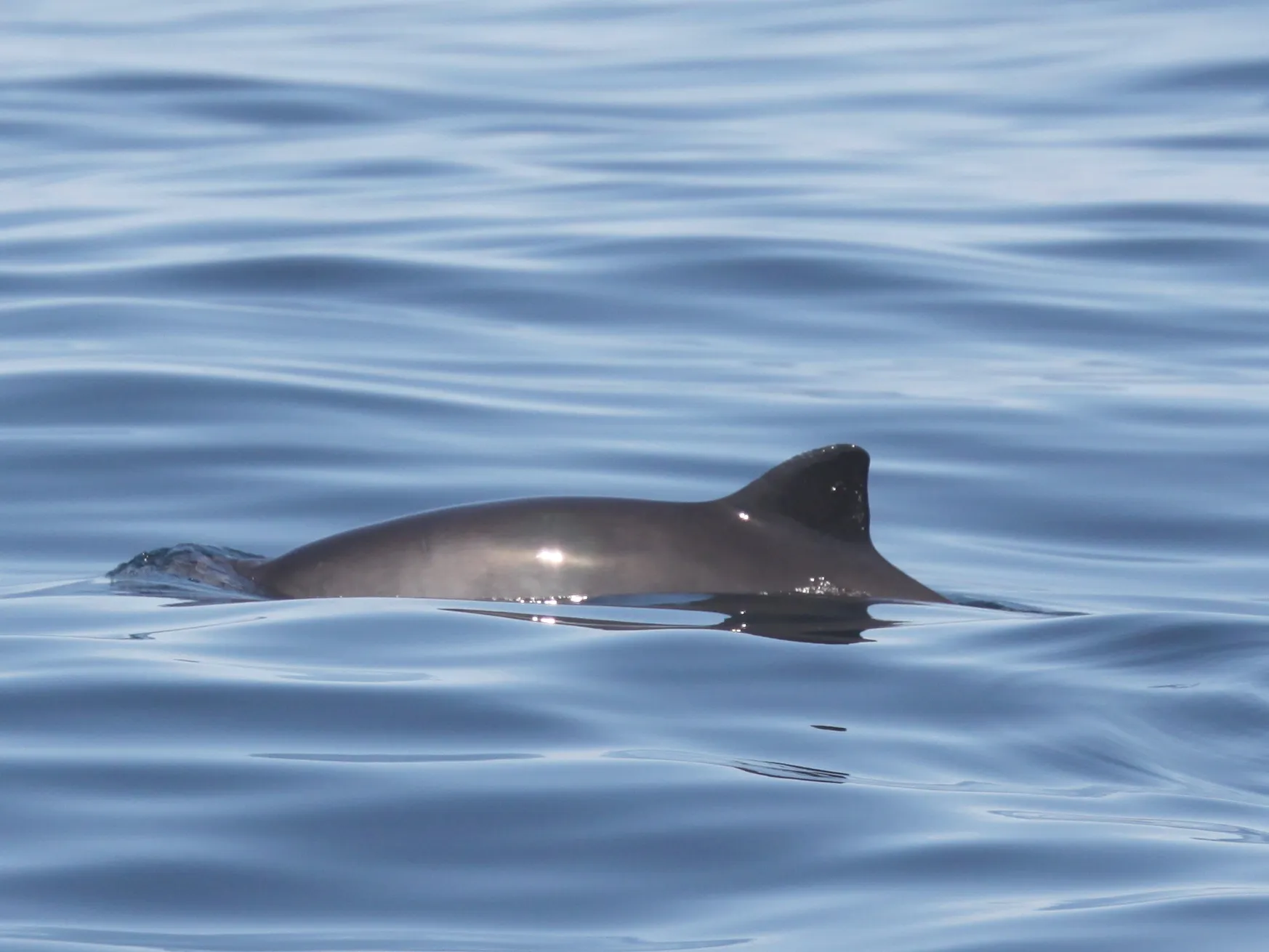
Image credit: Niki Clear, Manx Wildlife Trust
And there’s a lot more possible encounters out there during this time of year, says Matt.
“Summer and autumn is also when ocean dwellers that like warmer water venture into Cornish waters.
“In the last six years we’ve also started seeing Atlantic blue fin tuna. They can reach two metres in length and can be seen when they’re coming to the surface to catch their prey,” Matt continues.
Another oceanic visitor is the leatherback turtle. “It’s the largest turtle species in the world. It has a soft shell and feeds on jellyfish. In a summer when we have a lot of jellyfish visiting, you have the most chance of seeing them,” explains Matt.
Matt says that seals are also thriving in Cornish waters, and during this time of year pregnant females, feeding on large amounts of fish, will stretch out in the sun to warm up.
“This helps them digest all the food they’re taking on for their pups. By late summer and early autumn they find secluded, peaceful coves to give birth.”
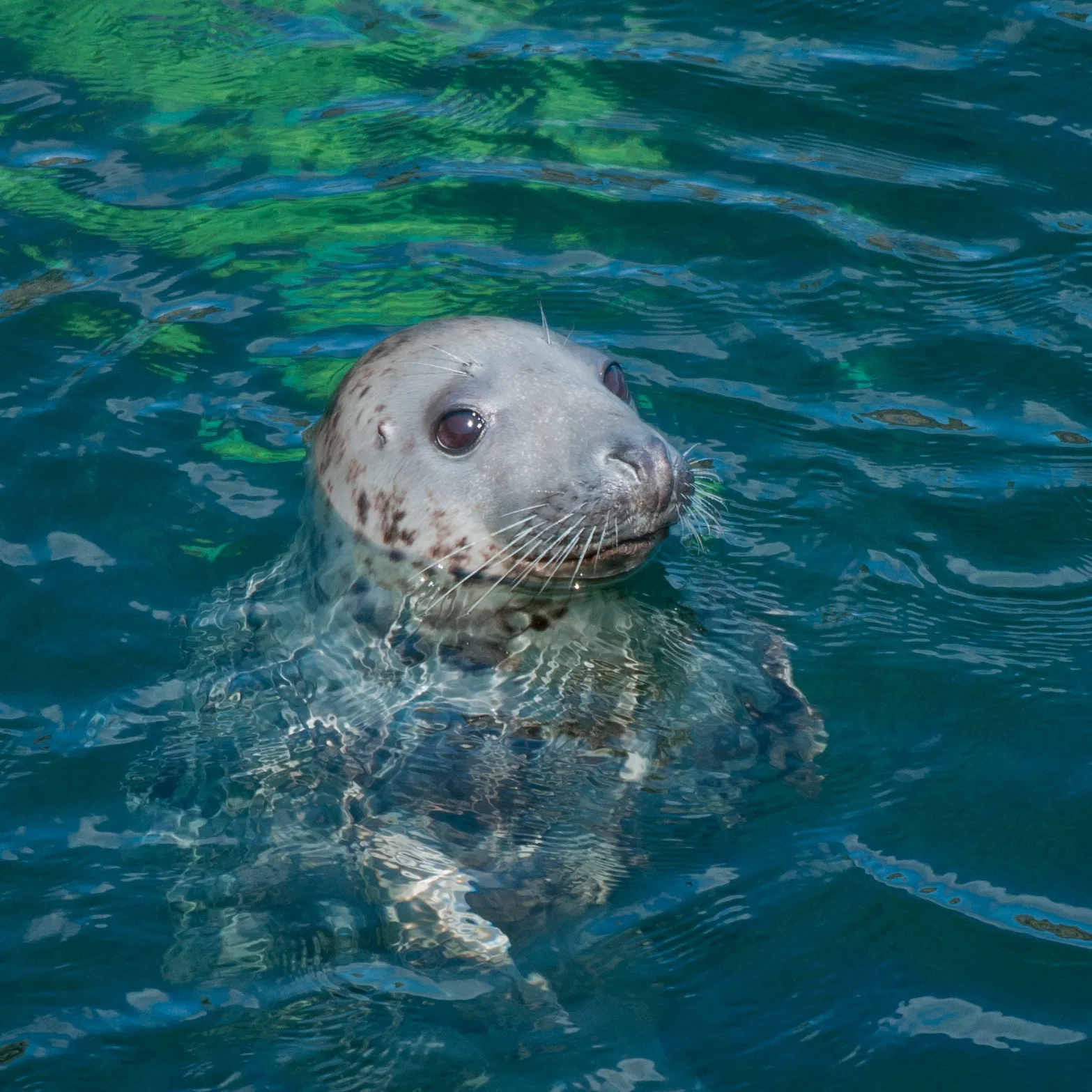
Image credit: Caz Waddell
Into winter and spring, while warm water visitors are absent, it might be the time to spot something bigger.
“We can also be visited by whales; the commonest is the minke whale, but we’ve also had records of much larger whales. If you’re out spotting wildlife in winter you could be extremely lucky and see a humpback or fin whale,” says Matt.
Wild encounters
With so much wildlife hunting, nesting and travelling through and around the Cornish coast it’s vital we keep them safe and help them to thrive.
Taking a guided tour to find wildlife helps ensure you’re respecting the animals you see and causing little disturbance. Often that’s about keeping your distance and using binoculars rather than trying to get too close. You can find out more about what to do via the Cornwall Marine and Costal Code.
If you’re visiting with your dog, it’s best to use a lead when walking near sea birds, advises Matt. Birds can be frightened and cliffs can be perilous for pets. During spring, dogs should avoid disturbing the ground-nesting skylarks that have their home in cliff-top habitats.
“If you do come across a seal on a beach or rocks, it’s important to keep dogs far enough away and on a lead to avoid disturbance or risk of injury,” says Matt.
While some beaches have restrictions on access for dogs during the summer, other beaches do not and there’s times at the beginning and end of the day when dogs are allowed on most beaches.
“Well behaved dogs are fine to be off the lead on the beach,” says Matt, “but you need to have good recall if you do spot wildlife so a dog can quickly be put on their lead.”
As we experienced, there’s an abundance of natural wonders out there to be found, with a little patience and luck on your side. And knowing what to do when you are lucky enough to encounter marine life helps make for a thriving coastal habitat.
Seeking wildlife at sea
All around the coast you can find wildlife spotting tours with good practices for limited marine disturbance.
Find out more about Coast Boat Trips and Cornwall Wildlife Trust’s marine conservation work. You can also visit the Cornwall Marine and Coastal Code website for more on caring for the marine life when out and about along the coast.
Browse our West Cornwall retreats, where you’ll be close to this thriving area of sea and wildlife.
